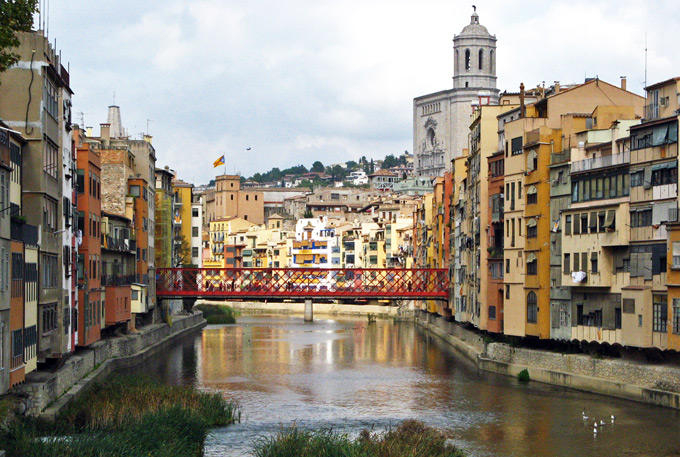Girona
-
A second daytrip took us to Girona, 60 miles to the northeast of Barcelona but far from the coast. Although Girona has an airport popular with Ryanair passengers, we traveled by Renfe train from Passeig de Gràcia.
Girona is a large city of 100,000 inhabitants and a provincial capital. It has a well preserved medieval quarter; defensive walls, much of it walkable; a major Cathedral; and scenic houses along the River Onyar. That river separates the old town to the east from the modern city on the west. It is spanned by several footbridges, including one designed by Gustave Eiffel.
We arrived early as the town’s vendors were just opening for the day. It was Saturday, Market Day, and that made for lively scenes both in the old town and in the park across the river. In our first glimpse of the old town, looking toward the Cathedral and Gustave Eiffel’s bridge, it was not yet 10 am:
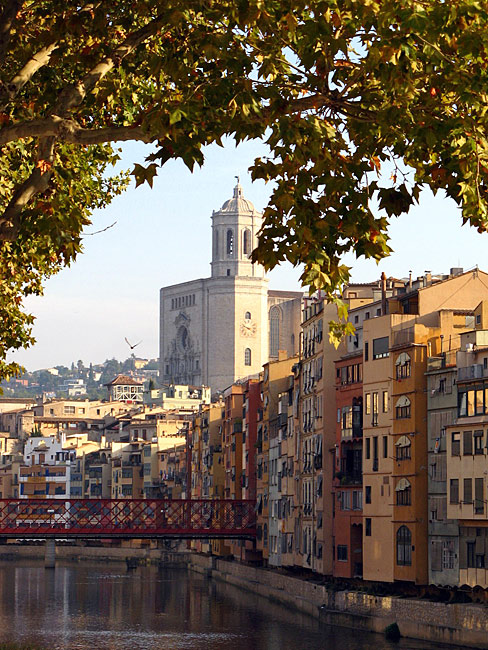
This tranquil view --- when brightened by a setting sun --- is a colorful Girona trademark. Biding our time, we chose first to walk the walls and explore the old town later. To reach the wall walk, though, a bit of climbing is needed ...
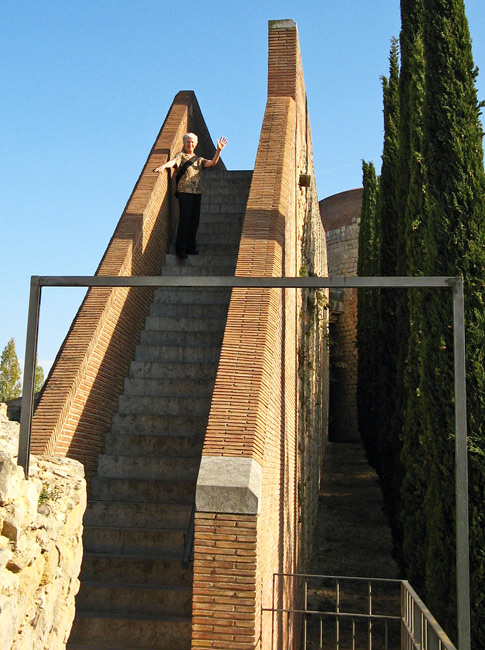
... but it has its own reward, a panorama across the modern city (wall in lower left quadrant) ...
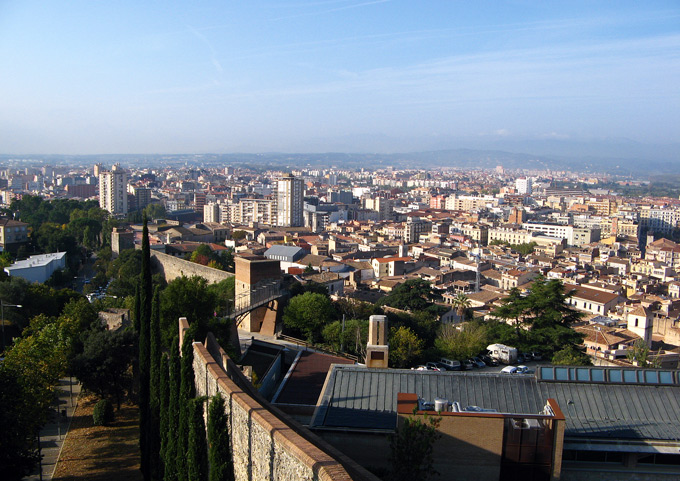
... and the old town off to the right:
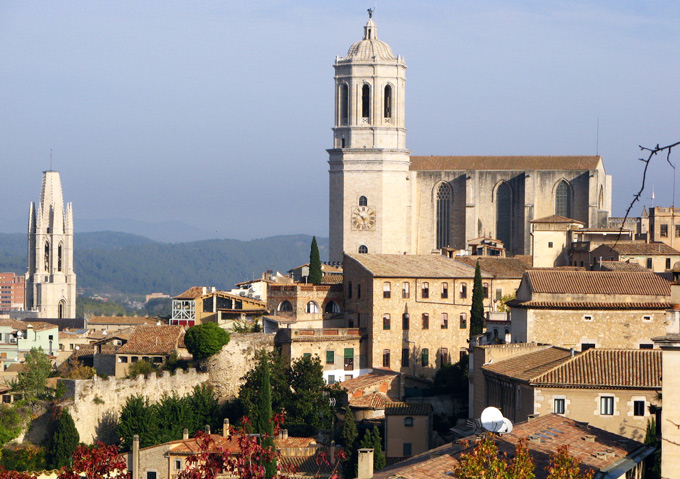
The Cathedral dominates the skyline, accompanied by Sant Feliu, the city’s second church.
Farther to the right, the wall continues, eventually curving around the Cathedral. In the foreground are the rooftops of the Convent de Sant Domènec:
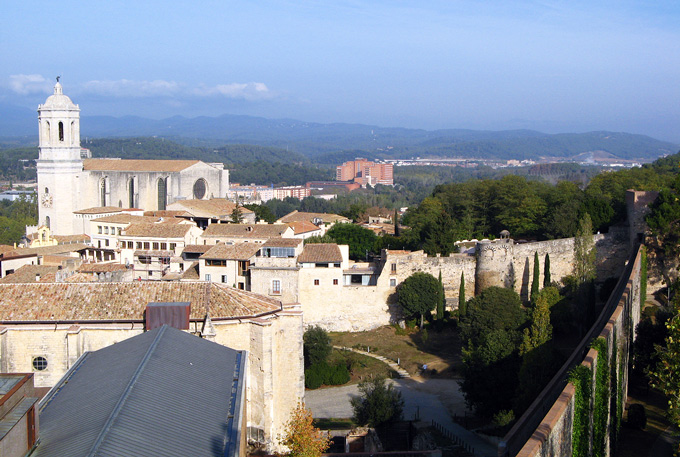
While on the walls, this is the closest view we had of the Cathedral:
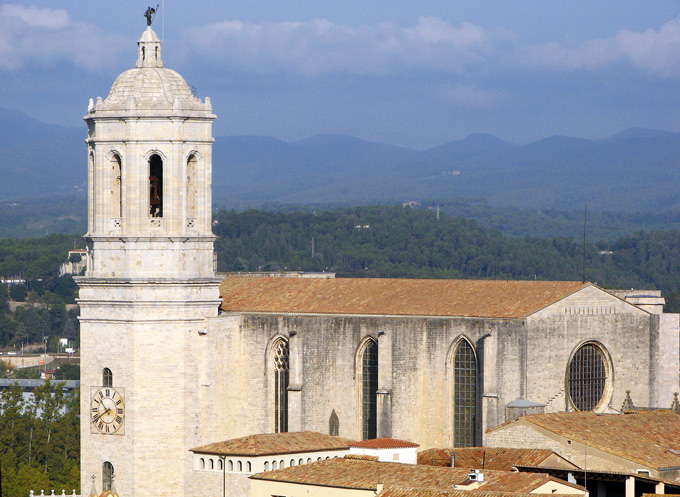
Just beyond, we returned to earth. From there, everything looked taller, especially the Cathedral:
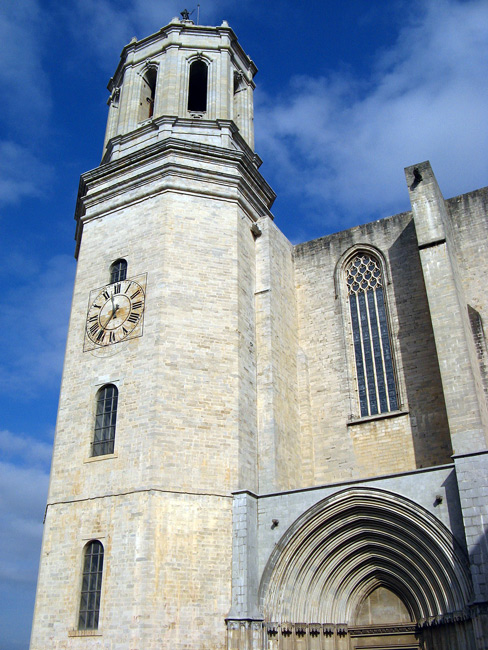
This church is famous for having the widest Gothic nave in the world:
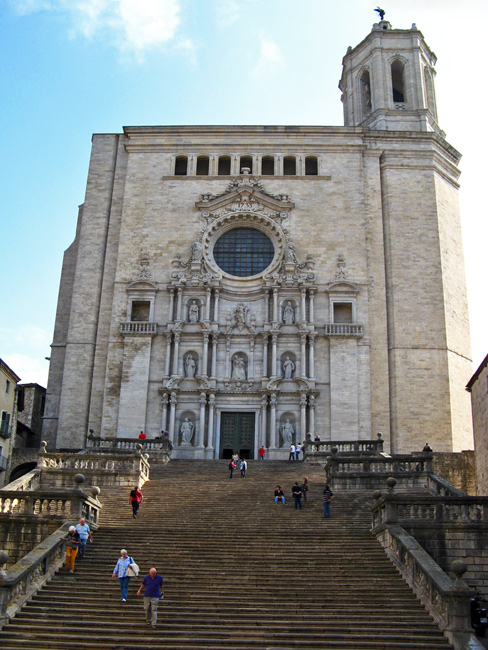
The 90 step staircase to its main entrance is noteworthy, as well!
From the Cathedral, narrow streets lead downhill through the old Jewish Quarter, known as El Call:
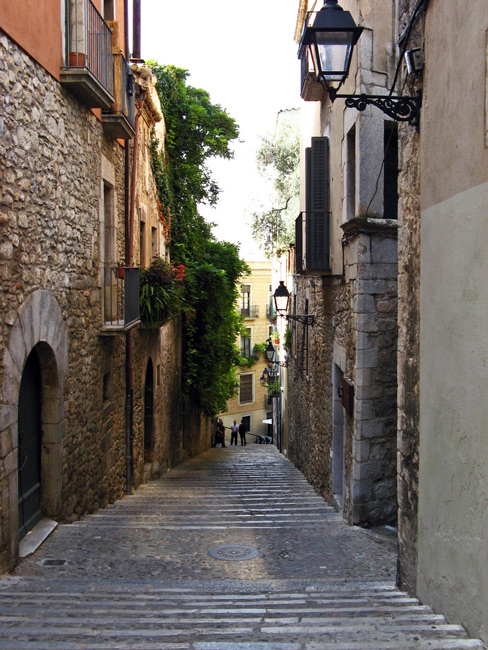
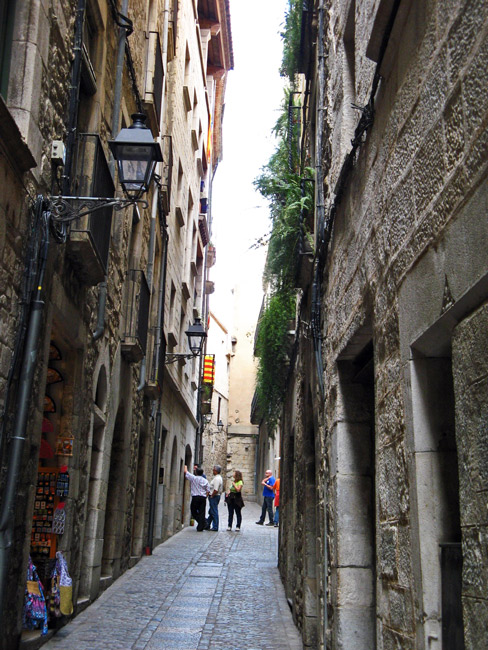
Around the corner is Girona’s History Museum, which we entered out of curiosity. In it, we had an unexpected lesson on a grim subject. The museum building once housed a Capuchin order of friars with a rarely-immitated way of “burying” their dead. This room with its 18 niches (mostly hidden) was the order’s cemetery or dessicator:
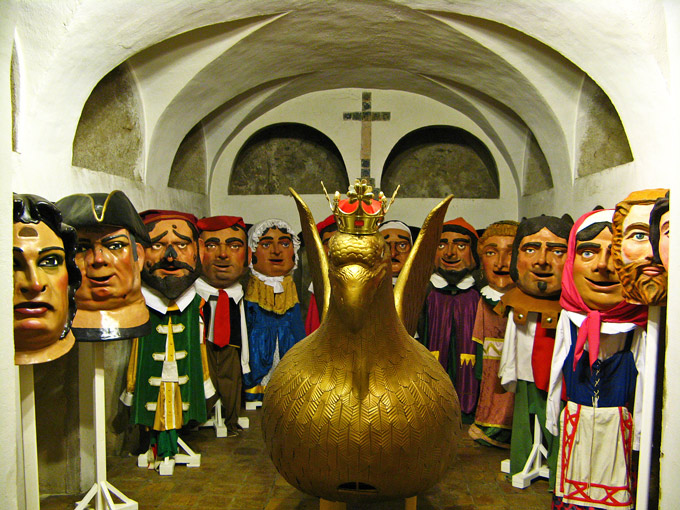
The bodies of deceased friars were placed in sitting position until dried out. After two years, the mummies were removed from the niches, dressed in religious habits and placed in an adjacent room:
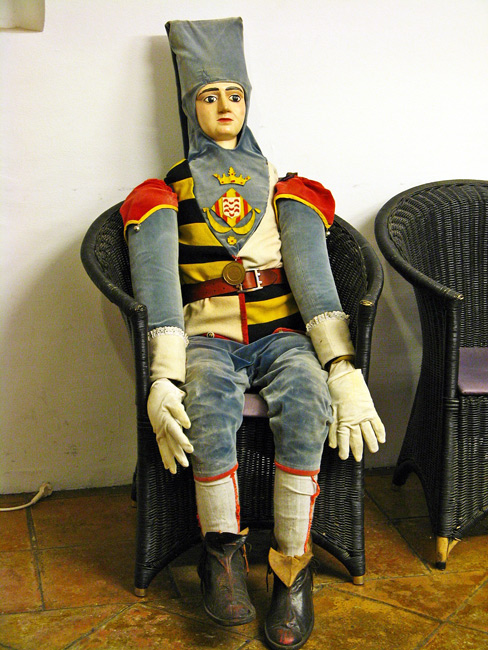
There, each living friar could reflect on the mortality of his own body every time he passed. The lesson, apparently, was to remember how temporary life is and to maintain focus on the next. I suspect the lesson, though extreme, was fairly effective.
Sorry, I do not know the significance of the over-sized heads in the cemetery. My guess is that they are merely being stored there until needed at the next “Parade of Giants.”
On a lighter note, we were cheered several times by this little band of drummers and horn players:
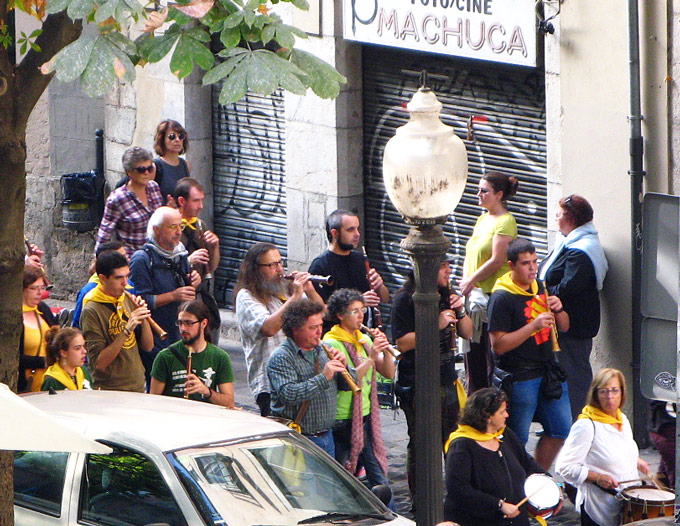
We heard them all over the old town as they marched and played, festively but intermittently. Whatever their purpose, they certainly added an air of gaity to the day.
From across the river, there is an excellent view of Sant Feliu with the Cathedral behind it:
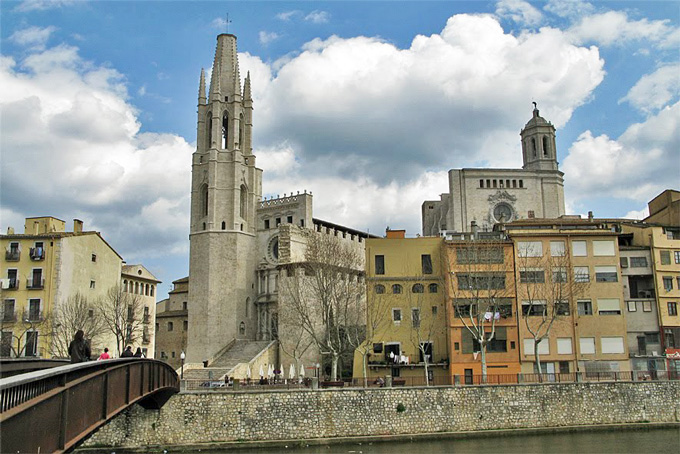
While we visited Girona, however, a large covered stage was in place between Sant Feliu and the bridge. That’s why the photo above is from the Internet. My own best effort is below:
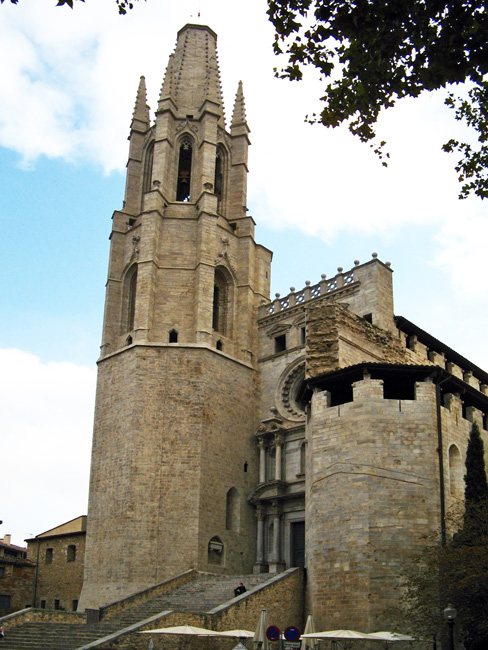
Sant Feliu was purposely designed to resemble a medieval fortress as it was outside the town’s defensive wall when built.
Headed for a large park west of the river, we wandered first through Plaça Independencia, filled with row upon row of market stalls. When we finally reached the park, instead of finding peaceful, tree-lined pathways, we discovered amusements of all kinds:
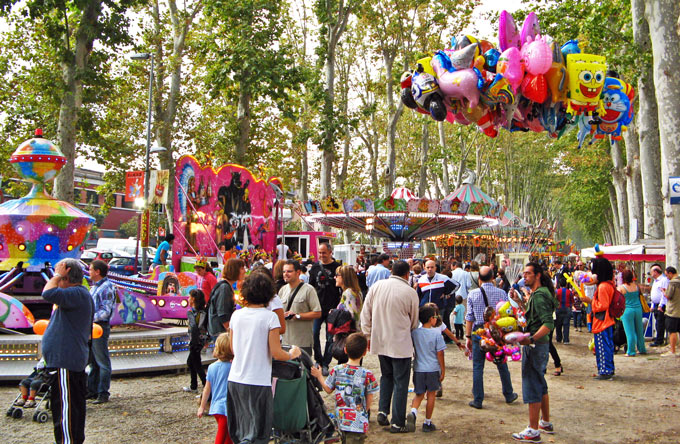
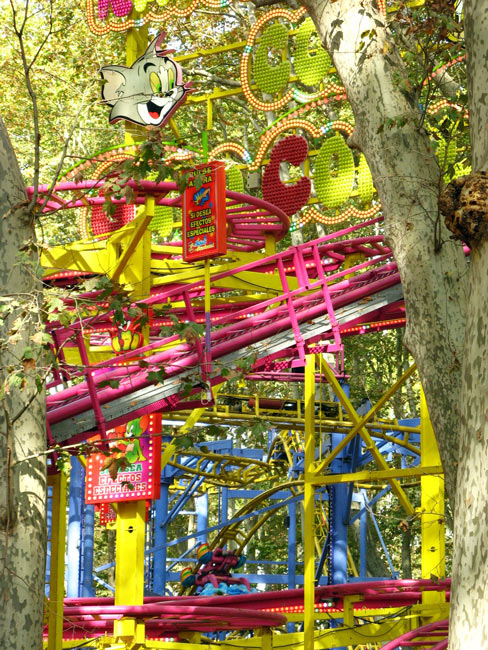
To be sure, trees were everywhere but so, too, were the amusements. How to reach the quieter parts of the park remained a mystery we never solved.
Most of park foliage was provided by plane trees, which are related to our sycamores:
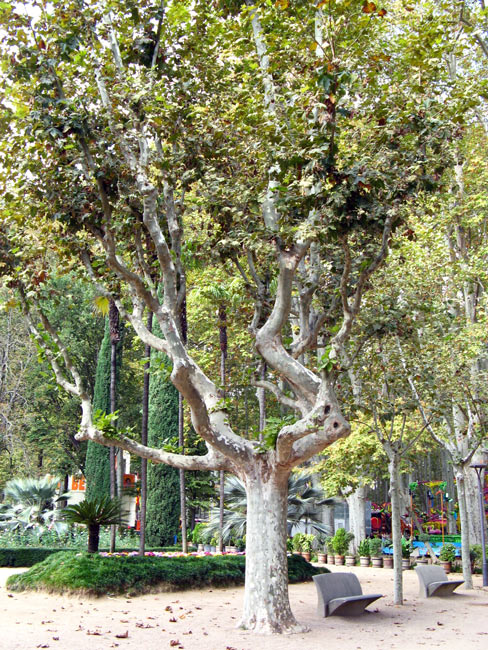
Though twisted and gnarly, these giants are extremely huggable:
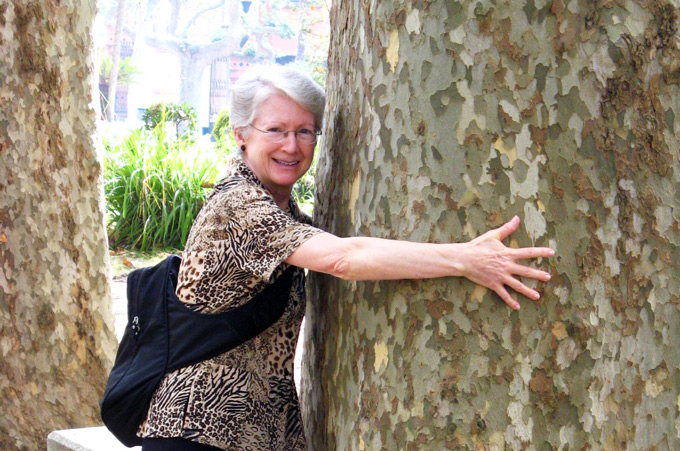
With the afternoon getting shorter, we headed back toward the train station, pausing at Girona’s riverside for photos:
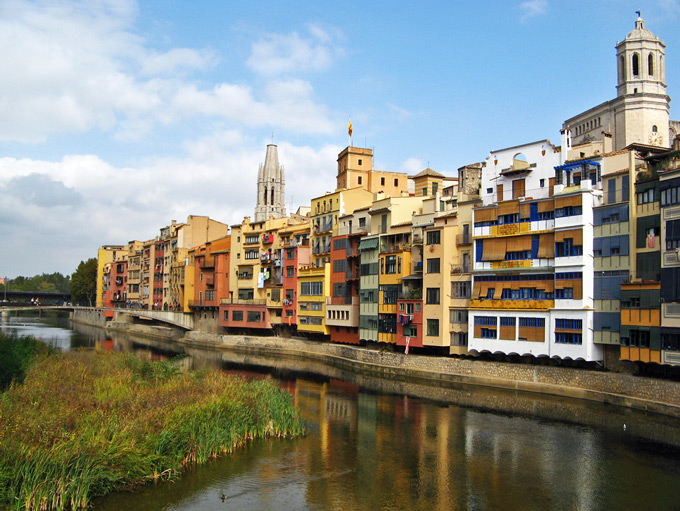
Though this scene may be famous when sunlit --- with a train to catch --- we couldn’t wait for the sun to cooperate:
